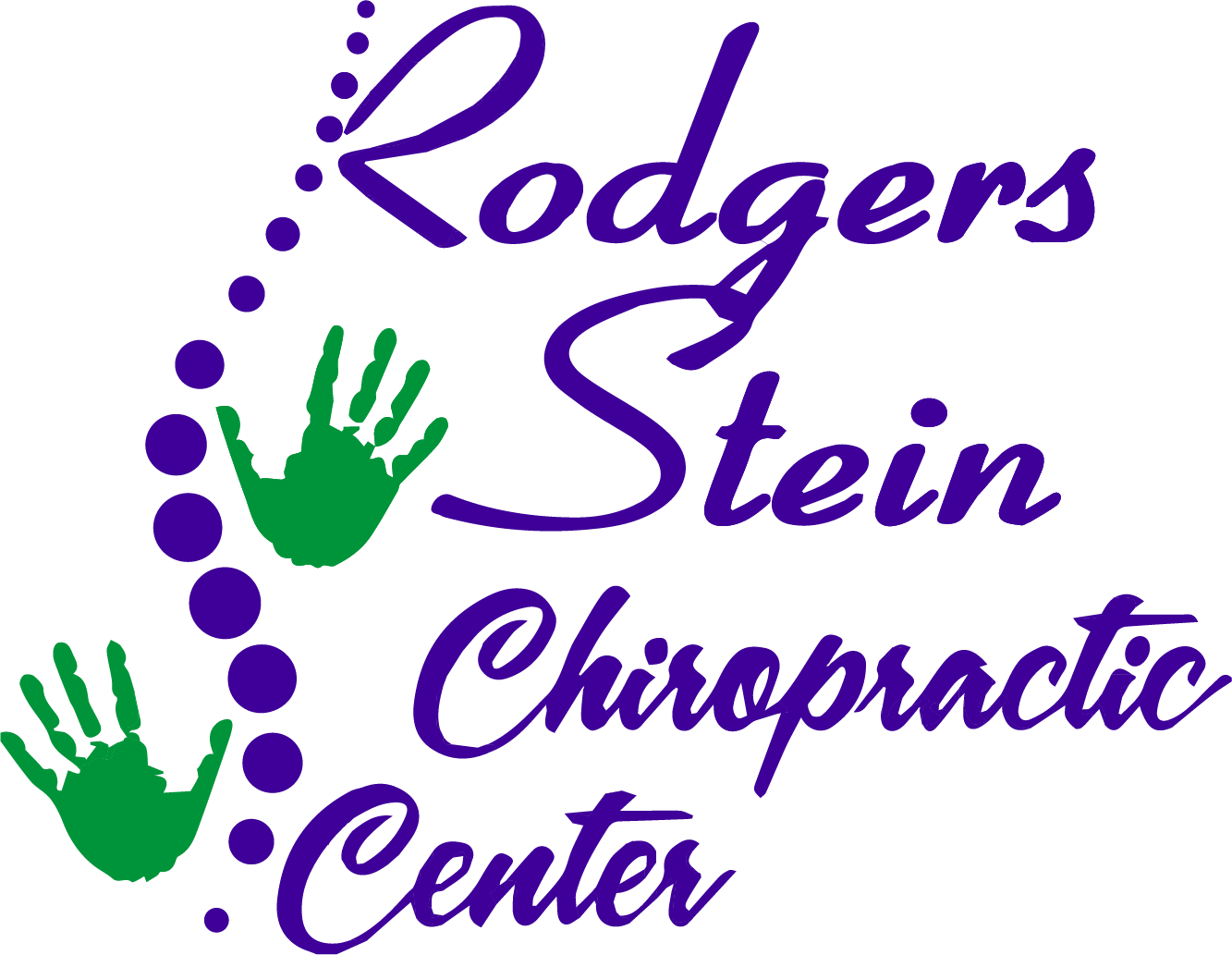If you've been struggling with migraines, you might want to explore how chiropractic care could help. It's not just about temporary relief; chiropractic addresses underlying issues like spinal misalignments that can trigger headaches. By focusing on improving circulation and reducing muscle tension, you may find a more natural alternative to medication. Plus, personalized treatment plans can empower you in managing your condition. But what specific benefits can you expect from incorporating chiropractic into your migraine management strategy?
Understanding Migraines
Migraines can be more than just a headache; they often come with debilitating symptoms that can disrupt your day. If you've ever experienced a migraine, you know it's not just about pain. It can involve nausea, sensitivity to light and sound, and even visual disturbances. These symptoms can last anywhere from a few hours to several days, leaving you feeling exhausted and overwhelmed.
Understanding migraines is vital for managing them effectively. They're often triggered by various factors, including stress, hormonal changes, certain foods, and lack of sleep. It's important to identify your personal triggers so you can take steps to avoid them. Keeping a migraine diary can help you track what you consume, your stress levels, and other factors that may contribute to your episodes.
When a migraine strikes, you might notice specific warning signs, known as aura. This can include visual disturbances, such as flashing lights, or physical sensations like tingling in your extremities. Recognizing these signs early can give you a chance to address the migraine before it fully develops.
Coping strategies can vary widely from person to person. Some people find relief through rest in a dark, quiet room, while others may require medication. Understanding your unique migraine pattern is key to finding the best approach for you.
Benefits of Chiropractic Care
Finding effective relief from migraines can often feel like an uphill battle, but chiropractic care may offer a promising solution. When you seek chiropractic treatment, you're not just addressing the symptoms; you're working towards finding the root cause of your pain. Chiropractors utilize hands-on techniques that help alleviate tension and reduce the frequency and severity of migraine attacks.
One of the key benefits of chiropractic care is its ability to enhance your overall well-being. Regular adjustments can improve blood circulation, which may help reduce headache triggers. You might also notice a decrease in muscle tension and stress, both of which are common contributors to migraines. By focusing on the nervous system, chiropractic care aims to restore balance, which can lead to fewer migraines.
Additionally, chiropractic treatment can help you avoid relying on medication. Many people experience side effects or find medications ineffective. With chiropractic care, you're opting for a natural approach that promotes healing without the potential drawbacks of pharmaceuticals.
Moreover, chiropractors often provide personalized advice on lifestyle changes, dietary adjustments, and stress management techniques that can further improve your quality of life. This holistic approach empowers you to take charge of your health and can lead to long-term relief.
Incorporating chiropractic care into your routine might just be the key to revealing a healthier, migraine-free life. It's time to explore this option and see how it can work for you.
Spinal Alignment and Headaches
How often do you consider the impact of spinal alignment on your headaches? If you're frequently experiencing migraines, it might be time to evaluate your spine's health. Your spine plays a vital role in your overall well-being, and misalignments can lead to a cascade of issues, including headaches.
When your spine is aligned correctly, it supports proper nervous system function. Misalignment, on the other hand, can impede nerve communication and create tension in your body, contributing to headache triggers. You mightn't realize it, but even minor misalignments can put pressure on nerves and blood vessels, leading to pain and discomfort.
Chiropractic adjustments can help correct these misalignments, restoring balance to your spine and alleviating headache symptoms. By ensuring your vertebrae are in their proper positions, you can enhance blood flow and reduce nerve irritation, offering you relief from those debilitating migraines.
Additionally, regular chiropractic care can help maintain your spinal alignment over time. This proactive approach can prevent headaches from becoming a recurring issue, allowing you to enjoy life without the burden of pain.
Taking care of your spine is essential for your overall health, and addressing any misalignments can greatly influence the frequency and intensity of your headaches. If you haven't considered chiropractic care yet, now might just be the perfect time to explore the benefits it can offer for your headache relief and overall quality of life.
Reducing Muscle Tension
Misalignments in your spine can lead to more than just headaches; they can also create muscle tension throughout your body. When your spine is out of alignment, it can cause your muscles to work harder to compensate for the imbalance. This overexertion results in tightness and discomfort in the surrounding muscles, often exacerbating migraine symptoms.
Chiropractic care focuses on correcting these misalignments through targeted adjustments. By realigning your spine, you can relieve the pressure on your muscles, allowing them to relax and function more efficiently. This not only alleviates tension but also helps to prevent future occurrences of both muscle tightness and migraines.
You may notice that as your muscle tension decreases, your overall sense of well-being improves. Regular chiropractic adjustments can enhance your body's natural ability to heal, reducing the stress on your muscles and improving their flexibility. This process helps restore balance and reduces the likelihood of tension-triggered migraines.
Additionally, chiropractors often provide exercises and stretches tailored to your needs, which can further aid in muscle relaxation. Incorporating these practices into your routine can empower you to take control of your health and well-being.
Improving Blood Circulation
Improving blood circulation can markedly impact your migraine experience.
When circulation enhances, it boosts oxygen delivery, reduces inflammation, and supports nervous system functionality.
As you explore chiropractic options, consider how these benefits might help alleviate your headaches.
Enhanced Oxygen Delivery
Many people may not realize the essential role that blood circulation plays in overall health, especially when it comes to managing migraines. Improved blood flow delivers oxygen and nutrients to your brain, which can greatly impact the frequency and intensity of your migraines.
When you visit a chiropractor, they can help enhance circulation through spinal adjustments, which optimize your body's natural processes. By ensuring that your spine is aligned, you enable your blood vessels to function better, allowing for better oxygen delivery throughout your body.
This increased oxygen supply can help alleviate the symptoms associated with migraines, as your brain needs adequate oxygen to function efficiently. When your brain is well-oxygenated, you may experience fewer migraine episodes and less severity when they occur.
Additionally, enhanced circulation can also foster overall relaxation and stress reduction, both of which are vital for migraine management. You'll likely find that regular chiropractic care not only improves your blood circulation but also contributes to a more balanced and healthier lifestyle.
Reduced Inflammation Effects
Chiropractic care can greatly reduce inflammation, which is essential for managing migraines. When your body experiences inflammation, it can lead to increased pressure and irritation in the surrounding tissues, contributing to headache symptoms. By addressing misalignments in your spine, chiropractic adjustments help improve blood circulation and reduce inflammation throughout your body.
With improved blood flow, your muscles and tissues receive more oxygen and nutrients, promoting quicker recovery and enhanced overall function. As inflammation decreases, you may notice a reduction in headache frequency and severity. This natural approach offers a safe alternative to medications that often come with unwanted side effects.
In addition to spinal adjustments, chiropractors may recommend specific exercises and stretches tailored to your needs. These can further enhance circulation and support your body's healing process.
It's important to remember that achieving lasting relief often requires a thorough plan, which could include regular chiropractic visits and lifestyle adjustments.
If you're struggling with migraines, considering chiropractic care could be a key step toward reducing inflammation and improving your quality of life. Don't let migraines control your days—explore the benefits of chiropractic care today.
Nervous System Functionality
When it comes to enhancing nervous system functionality, effective blood circulation plays an important role in managing migraines. Poor circulation can lead to insufficient oxygen and nutrients reaching your brain, exacerbating migraine symptoms.
Chiropractic care helps improve blood flow, which can alleviate this issue and promote overall well-being.
Here are four ways chiropractic adjustments can enhance blood circulation:
- Spinal Alignment: Proper spinal alignment can reduce nerve interference, allowing signals to flow freely throughout your body, which supports better blood circulation.
- Reduced Muscle Tension: Chiropractic treatments can release muscle tension, allowing blood vessels to widen and improve circulation, consequently reducing migraine triggers.
- Enhanced Lymphatic Drainage: Adjustments can stimulate your lymphatic system, helping to remove toxins and improve the overall fluid balance in your body, which is essential for peak blood flow.
- Stress Reduction: Regular chiropractic visits can lower stress levels, ultimately decreasing muscle tightness and promoting relaxation, both of which contribute to improved blood circulation.
Stress and Migraine Connection
Stress can be a major trigger for your migraines, often leading to increased muscle tension in your neck and shoulders.
Recognizing how stress affects your body is essential in managing these headaches effectively.
Let's explore some practical stress management techniques that can help alleviate your migraine symptoms.
Stress Triggers Migraines
Migraines often strike when life feels overwhelming, and stress is a common trigger for many individuals. You might notice that during particularly hectic times—whether it's work deadlines, family responsibilities, or personal challenges—your migraines seem to flare up more often.
Understanding the stress-migraine connection can help you manage both effectively.
Here are four ways stress can contribute to migraines:
- Hormonal Changes: Stress can trigger hormonal fluctuations, which may lead to migraine attacks.
- Sleep Disruption: Stress often interferes with your sleep quality, and lack of rest is a known migraine trigger.
- Dietary Choices: Under stress, you might resort to unhealthy eating habits, which can provoke migraines.
- Increased Muscle Tension: Stress can cause tightness in your neck and shoulders, contributing to migraine onset.
Muscle Tension's Role
Muscle tension often creeps in during stressful times, and it can play a significant role in triggering migraines. When you're under pressure, your body naturally tenses up, especially in your neck, shoulders, and upper back. This tension can lead to increased pain and discomfort, making you more susceptible to migraines.
You mightn't realize how much tension you're holding until it manifests as a headache. Tight muscles can restrict blood flow and irritate surrounding nerves, further intensifying your migraine symptoms. If you've ever noticed your head throbbing after a long day, that muscle tension could be a vital factor.
Chiropractic care can help address this issue by focusing on spinal alignment and muscle relaxation. A chiropractor can use various techniques to alleviate tension in your muscles and improve your overall posture. By reducing muscle tightness, you may find that your migraines become less frequent or less severe.
Understanding the connection between muscle tension and migraines is essential. By recognizing the impact of stress on your body, you can take proactive steps toward relief and better management of your migraine symptoms.
Effective Stress Management Techniques
Finding effective ways to manage stress can be a game changer for reducing migraine frequency and intensity.
Stress plays a significant role in triggering migraines, so developing techniques to cope with it can make a real difference.
Here are four effective stress management strategies you can try:
- Mindfulness Meditation: Spend just a few minutes a day focusing on your breath and being present. This practice can help calm your mind and reduce anxiety.
- Regular Exercise: Physical activity releases endorphins, which can boost your mood and help alleviate stress. Aim for at least 30 minutes of moderate exercise most days.
- Deep Breathing Exercises: When you feel stress creeping in, take deep, slow breaths. Inhale deeply through your nose, hold for a few seconds, and exhale slowly through your mouth.
- Journaling: Write down your thoughts and feelings to process your stressors better. This can help you identify patterns and develop coping strategies.
Personalized Treatment Plans
Creating personalized treatment plans for chiropractic care can greatly enhance your experience in managing migraines. When you visit a chiropractor, they'll assess your unique situation, including your symptoms, medical history, and lifestyle. This thorough evaluation allows them to tailor a plan specifically for you, rather than relying on a one-size-fits-all approach.
Your personalized plan may include a combination of spinal adjustments, soft tissue therapies, and lifestyle modifications. By targeting the root causes of your migraines, you'll potentially reduce their frequency and intensity. For instance, if stress or tension is a considerable trigger for you, your chiropractor might incorporate techniques aimed at relaxation and muscle relief.
Additionally, your chiropractor may recommend exercises that strengthen your neck and back, improving your posture and reducing strain that can contribute to migraines. Nutrition and hydration advice could also be part of your plan, as these factors can greatly influence your overall well-being.
Regular follow-ups will allow your chiropractor to monitor your progress and make necessary adjustments to your treatment. As you report changes in your migraine patterns, your plan can evolve to better suit your needs.
Ultimately, a personalized treatment plan not only addresses your current issues but also empowers you to take charge of your health. By committing to this process, you're investing in a brighter, more comfortable future, free from the debilitating effects of migraines.
Embrace the journey, and watch how tailored chiropractic care can transform your life.
Evidence Supporting Chiropractic
When it comes to managing migraines, a growing body of evidence supports the effectiveness of chiropractic care. Research indicates that chiropractic adjustments can help alleviate migraine symptoms and reduce the frequency of attacks.
Here are some key points that highlight the evidence supporting chiropractic treatment for migraines:
- Clinical Studies: Numerous clinical studies have demonstrated that chiropractic adjustments can lead to significant reductions in the frequency and intensity of migraines. Many patients report fewer headache days after receiving consistent chiropractic care.
- Improved Neck Function: Many migraine sufferers experience neck pain or tension. Chiropractic adjustments often improve neck mobility and function, which can help mitigate migraine triggers related to neck issues.
- Patient Testimonials: Many individuals with chronic migraines have shared their positive experiences with chiropractic care. These testimonials reveal improvements in overall quality of life and reduced reliance on medication.
- Holistic Approach: Chiropractic care addresses not just the symptoms but the underlying causes of migraines. By focusing on spinal health and alignment, chiropractic care can help manage stress and tension, both of which are common migraine triggers.
Integrating Chiropractic Into Care
Integrating chiropractic care into your overall treatment plan for migraines can enhance your management strategy and improve outcomes. By working with a chiropractor, you can address musculoskeletal issues that may contribute to your migraine symptoms. Chiropractors focus on spinal alignment, which can help alleviate tension and improve blood flow, potentially reducing the frequency and intensity of your migraines.
To get started, consult your primary healthcare provider about incorporating chiropractic care into your treatment. They can help you find a qualified chiropractor who understands your specific needs. During your initial visits, your chiropractor will assess your posture, spinal alignment, and overall health. Based on this evaluation, they'll create a tailored plan that may include spinal adjustments, soft tissue therapy, and lifestyle recommendations.
Don't forget to communicate openly with both your chiropractor and healthcare provider about your migraine triggers and any existing treatments. This collaboration guarantees everyone is on the same page and allows for a more thorough approach to your care.
You might also consider keeping a migraine diary to track the effectiveness of chiropractic treatments alongside other therapies.
Integrating chiropractic care can be especially beneficial when combined with other modalities, such as medication, physical therapy, or mindfulness techniques. By adopting a holistic approach, you're more likely to find relief and improve your quality of life.
Conclusion
Incorporating chiropractic care into your migraine management can be a game-changer. By addressing spinal misalignments, reducing muscle tension, and improving blood circulation, you can find significant relief from headaches. With personalized treatment plans tailored to your needs, you're not just treating symptoms; you're tackling the root causes. Embracing this holistic approach can enhance your overall well-being and empower you to take control of your migraines. So why not give chiropractic care a try?



